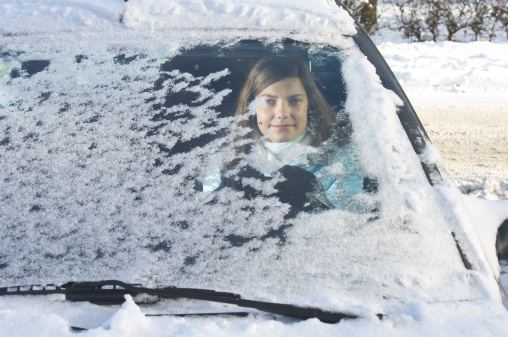29 December, 2014
It’s no coincidence that the most successful sportspeople and business leaders stress the small stuff.
They really pay attention to the marginals, helping them add up to make a greater whole; this allows them a better chance of succeeding.
And the same applies to classic car winter motoring.
Paying attention to a few simple winter-driving rules could make all the difference between having an accident in the colder weather and living to tell the tale.
Footman James classic car insurance director David Bond is in no doubt that December-to-February brings about more dangerous motoring conditions.
That’s why we’re offering the following 13-point checklist so that classics drivers can get through the winter months safely. 
Before you switch your ignition key:
- Visibility is one of your best allies in the cold, darker winter months; so ensure that your headlights are up to the task by cleaning them regularly
- Similarly, check your windscreen washer fluid or risk considerably restricting your range of vision. Use screenwash top-ups instead of tap water or risk it freezing
- Set your alarm clock five minutes earlier each morning to give yourself the time to completely de-mist and de-ice your vehicle should conditions necessitate this
- Check that your wipers remain in perfect working order
- Never venture out without key emergency supplies. You never know when freak weather is suddenly going to appear, possibly leaving you stranded on remote roads. Warm clothes, first-aid kit, jump leads, spare tyre, torch, shovel and even a flask containing a hot drink all come recommended. Oh, and be sure that your mobile’s battery is completely charged
- Ensure that you have every breakdown and accident phone number you’ll need at your disposal
- Check your tyres regularly, and remember, over-inflated ones is as hazardous as under-inflated in icy conditions
After you switch your ignition key:
- It sounds obvious, but drive to the conditions. It can sometimes take up to 10 times as long to bring your classic to a halt on icy roads than on dry ones
- If you possibly can, don’t veer from main and trunk roads because, chances are, these will be gritted
- Sudden acceleration and braking are also big no-no’s in extreme cold
- It’s among a driver’s worst nightmares; you find yourself skidding, helplessly spiralling round in circles. So what can you do? Don’t panic for a start. Keep the ice in your veins, gradually ease off your accelerator and avoid braking suddenly
- Dipped headlights as opposed to sidelights are recommended for constant use in snowy, rainy and murky conditions, whatever the time of day. Be seen, not sorry
- No-one is going to pretend that braking on snow or ice is easy. But try doing so without the need to lock the wheels. Then go into your lower gears sooner than usual, allowing the pace of your classic to drop before gently applying your brake pedal
Share with us some of your winter driving tips, send us a message through our Facebook page or by tweeting us at @Footman_James.

COMMENT